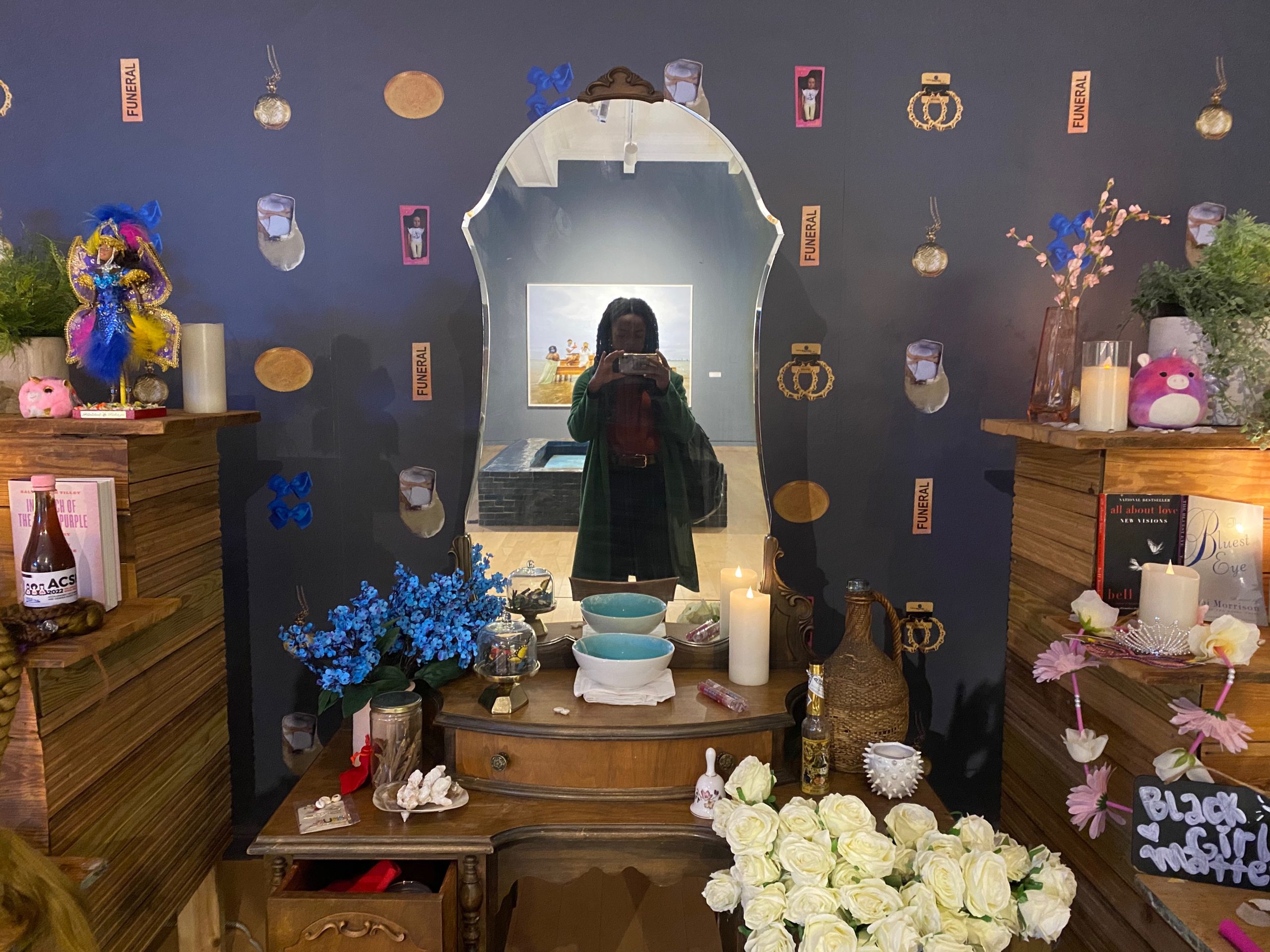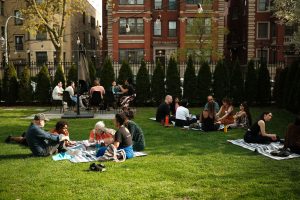The first thing that comes to mind when I think about The Black Girlhood Altar is the sound of rushing water. About two years ago, I found myself walking through the Museum of Contemporary Art in Chicago. Amidst all of the exhibits filling the multi-story building, it was the soothing sound of rushing water that beckoned me into a space entitled The Black Girlhood Altar.
A few weeks ago, I found myself enchanted by that same sound while walking the floors of the Chicago Cultural Center.
In 2021, while working at the Museum of Contemporary Art, Ángelina Cofer was contemplating the nationally rising number of murdered and missing women and girls. An alumni of the Chicago-based non-profit and national art organization, A Long Walk Home (ALWH), Cofer saw an opportunity to elevate an awareness of that ongoing epidemic of violence, specifically against Black women and girls. Since ALWH’s inception in 2003, its mission has been to empower young people to end violence against the most vulnerable girls and women. One day, while Cofer was conversing with ALWH co-founder, Scheherazade Tillet, about the importance of this art exhibit in such a prominent institution, the idea of centering altars and spiritual rituals arose.
From these initial conversations, The Black Girlhood Altar was born.
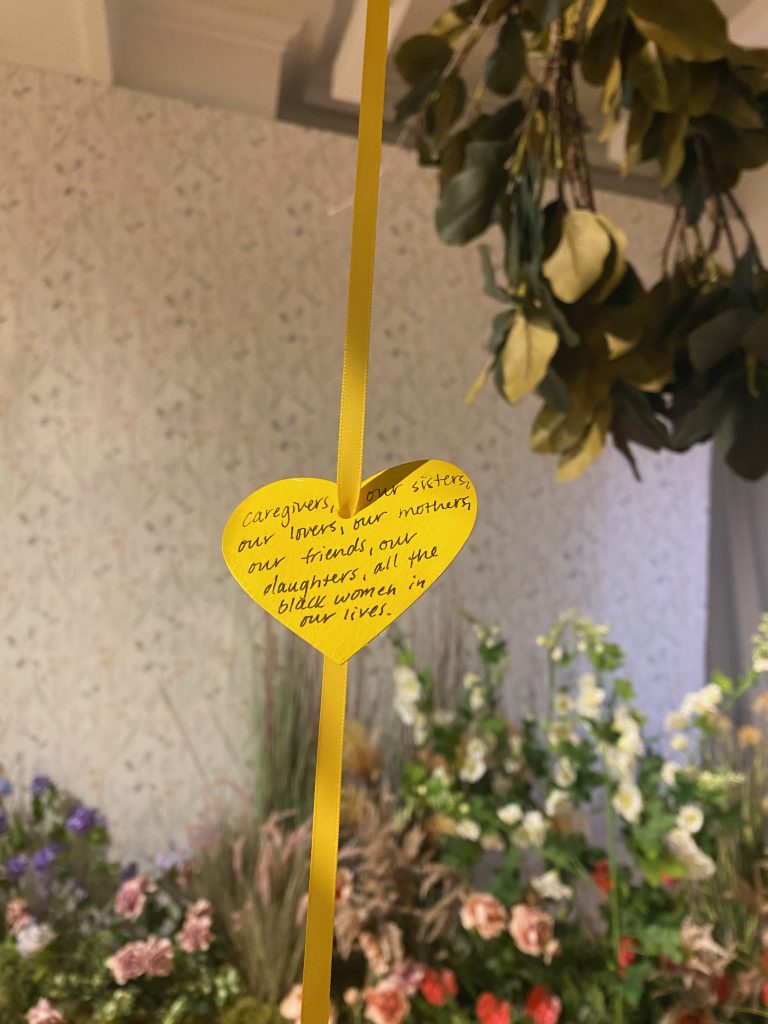
Tillet and her artistic collaborator, Robert Narciso, have developed multiple iterations of The Black Girlhood Altar, exhibiting the show across the country from Project Row Houses in Houston to Project for Empty Space in Newark. After three years of touring the altar, the Chicago Culture Center is the exhibit’s final, triumphant stop.
“[The altar] is an iconography of Black spirituality, a memorial of love, of time, of pain and I’m forever grateful that an idea that I had wasn’t only at the MCA but massed into three rooms at the Chicago Architecture Bi-Annual,” said Cofer earlier this month at a panel discussion entitled In Solidarity of Missing and Murdered Indigenous Women and Girls. In conversation with indigenous youth activist Kiora Burgess-Mattews, the women spoke to the power of organizing and arts advocacy as well as how groups like the Minnesota Indian Women’s Sexual Assault Coalition have directly influenced the work of groups like ALWH and vice-versa. Last year, The Black Girlhood Altar made a temporary appearance at the Minnesota State Capitol in St Paul on the National Missing and Murdered Indigenous Women and Relatives Day illuminating these mirrored and interconnected issues.
Since its inception, The Black Girlhood Altar has honored eight Black women and girls: Rekia Boyd, Latasha Harlins, Ma’Khia Bryant, Hope, Harmony, Marcie Gerald, Lyniah Bell, and Breonna Taylor. This final exhibit—Freedom Square: The Black Girlhood Altar—is presented in three distinct gallery spaces: Call and Response, Rest and Recess: The Courtyard, and Ritual and Prayer.
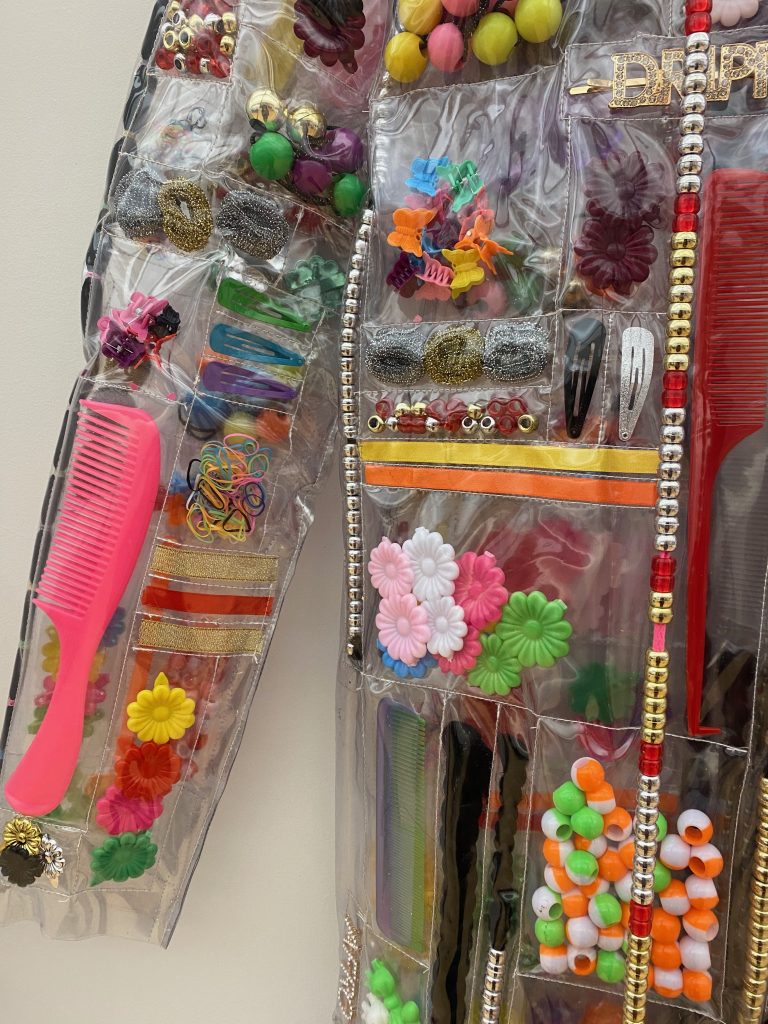
The South Gallery features Call and Response, a collection of intergenerational photographs, evocative video-based works, tactile pieces and a sound installation. The curation of art from diverse mediums created by artists spanning political and cultural moments from the past century invites the visitor to reckon with the timely and historic themes the exhibit highlights. A black-and-white photograph taken in the 1940s by Gordon Parks is right around the corner from a surrealist, magical short film “Black Mermaids” created by ALWH participants. Across the room, a stunning clear vinyl jacket reveals rainbow-colored plastic barrettes, combs, and hair ties, all carefully sealed in its plastic pockets. This is “For the Culture Product Jacket” by Shaquita Reed, a simultaneously futuristic and nostalgic multimedia artwork that embodies the exhibit’s commitment to celebration.
“A lot of things on the altar are things that Black girls enjoy, love, use . . . [we have] beads and barrettes and toys,” said Cofer. “When we think about offering to a child’s spirit, what would a child want? What would a child need in the afterlife to continue play? To heal their own spirits as they’ve transitioned?”
Play and childhood wonder emanate from every corner of the middle gallery, Rest and Recess: The Courtyard. A massive tree roots in the center of the room drawing your attention to its scale and the vibrant yellow hearts, filled with prayers and wishes for Black girls, hanging from its branches. The tree is inspired by the life and death of Rekia Boyd who was killed in 2012 by an off-duty police officer in Douglass Park. The installation includes actual branches taken from the backyard of Boyd’s family home, representing an indistinguishable, ancestral life. Each yellow streamer and heart echos the demonstration ALWH held at Douglass Park in 2018 and offers a vision of the permanent monument ALWH hopes to develop in the park to honor Boyd.
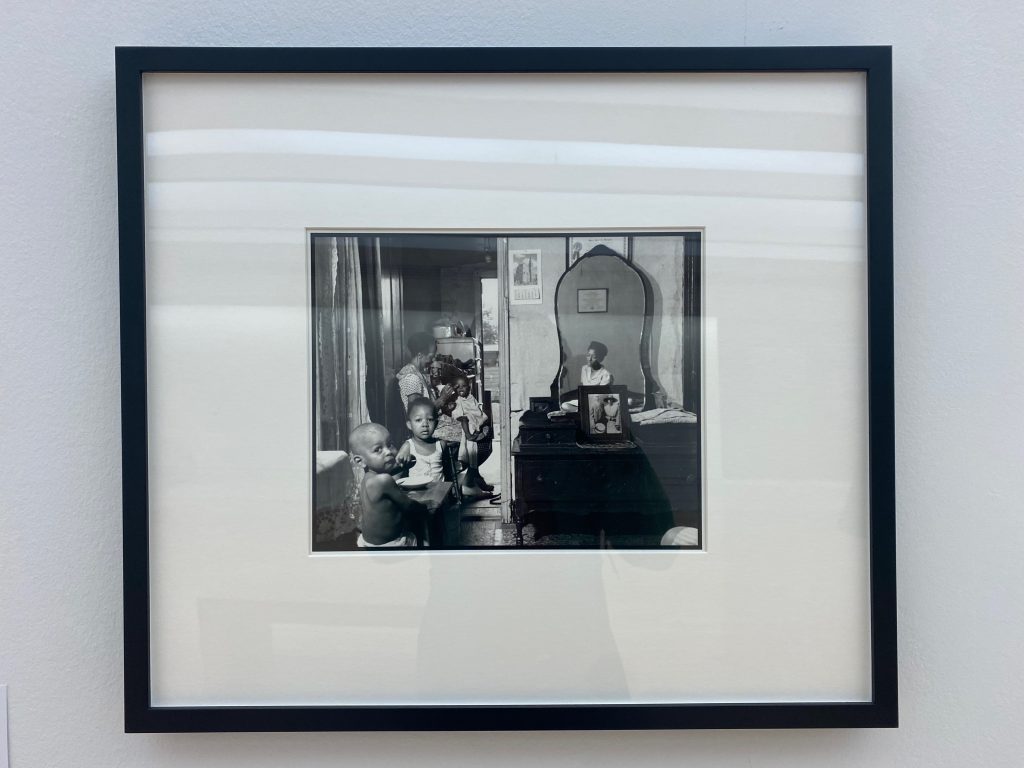
After taking in the gravitas of the tree, the sweet sounds of childhood play invite the visitor into the gallery’s gentle, convivial environment. The collection of audio clips includes recordings from Jamaica, Trinidad and Tobago. Tillet, who created the sound installation and the large wall-to-wall print in the back of the room, pulled from her own experience as a young girl in Trinidad and Tobago; a wall-size print of young girls at a water fountain comes from the elementary school she attended as a child at a time in her life when she did not actively witness violence. The water fountains recreated in the space transcend the restrictions of time and distance inviting the viewer to imagine themselves in a moment of refreshment, play and childlike innocence. Similarly, the curved benches in the room were designed to invite the reader to rest and stay—to experience a fleeting moment of peace amidst so much grief and loss.
Like a hidden stream, the sound of moving water calls the viewer into the North Gallery, Ritual and Prayer; a lullaby of sorts. The darker lighting and blue walls call for a deep reverence and draw viewers to the heart of the spiritual world woven throughout the exhibit. In the center of the room, a video of the short film “Rainbow Beach Altar Installation” that was recorded during an earlier altar installation at the popular beach on the south side of Chicago, plays beneath a pool of water. The installation calls upon the grounding power of Lake Michigan while also alluding to the spiritual practice of offering libations to ancestors.
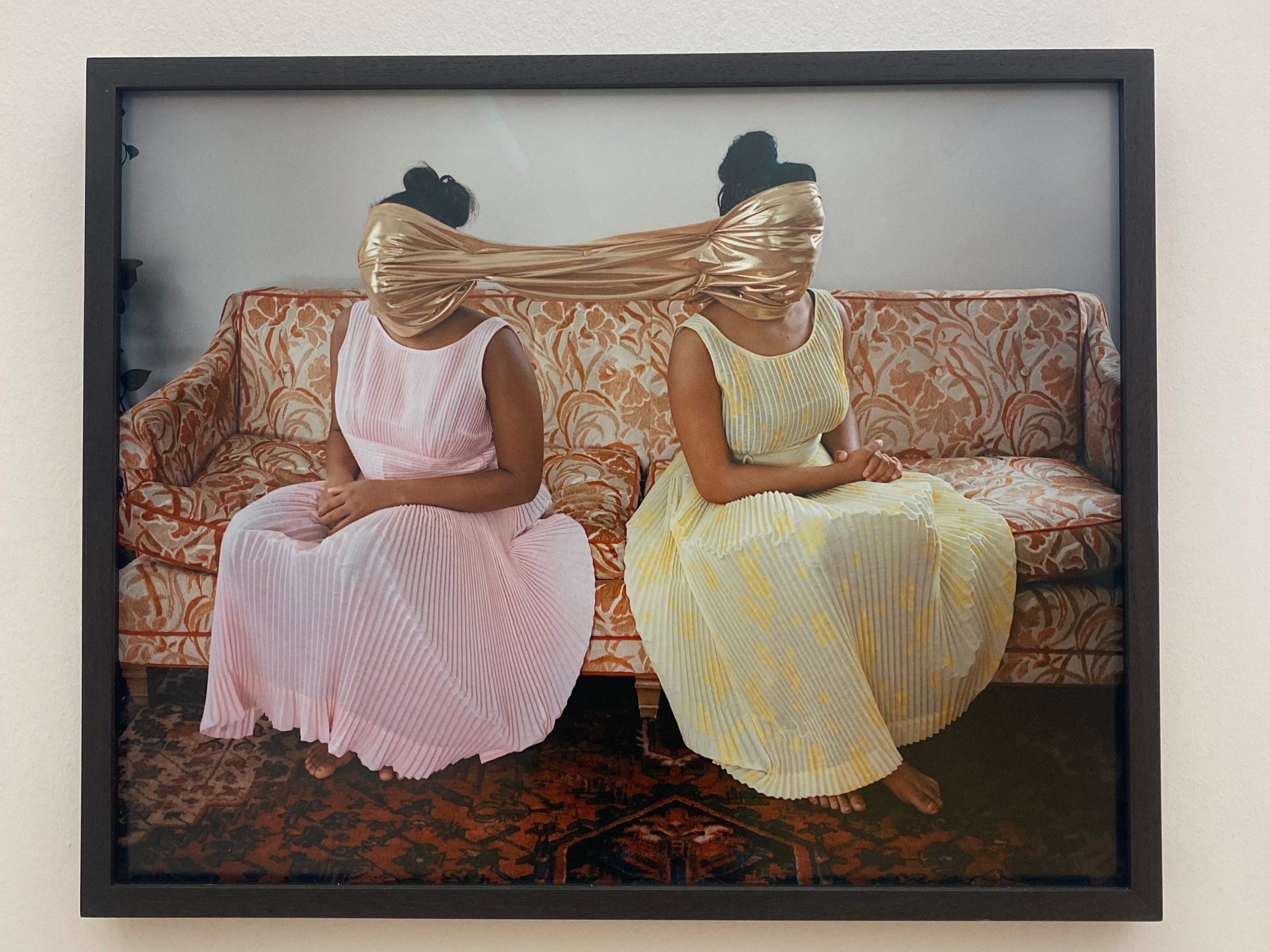
The walls of the room are overwhelming in their intricacy; for example, one wall is lined with small gold lockets showcasing childhood photos of the women honored in the exhibit. Nearby, the massive Altar is displayed in front of detailed wallpaper which features an image of Tillet’s niece’s ballet slipper and an image of the word “funeral” collected from Sandra Bland’s funeral, which Tillet attended. This seamless connection of deeply personal artifacts and nationally recognized names like Sandra Bland and Breonna Taylor collapses any false sense of distance from their deaths and the lived experiences of thousands of Black women and girls.
“So many of our young people are unfortunately having suicide attempts and suicidal ideations, said Tillet. “I wanted to talk about that as a part of being missing and murdered, as well… we decided to not only have this altar around the missing and murdered, but the people who remembered them.” The Freedom Square exhibit invites a global audience to acknowledge and grieve the lives and legacies of the women whose stories it centers.
To honor the various individuals who are impacted by and grieving these lost lives, the altar is not attributed to an individual artist but ALWH as a collective. An open call was made to the organization’s community to crowd source what items felt essential to include on the altar: copy of Toni Morrison’s “The Bluest Eye,” fresh fruit, dolls, and roller skates are tucked between candles, plants and hair products. The altar overflows with the multifaceted objects and images that represent Black girlhood. Each object radiates Black life, femininity, and youth. It feels as though one of the girls represented in the show might appear, grab her favorite lip gloss from the altar and head out to meet her friends.
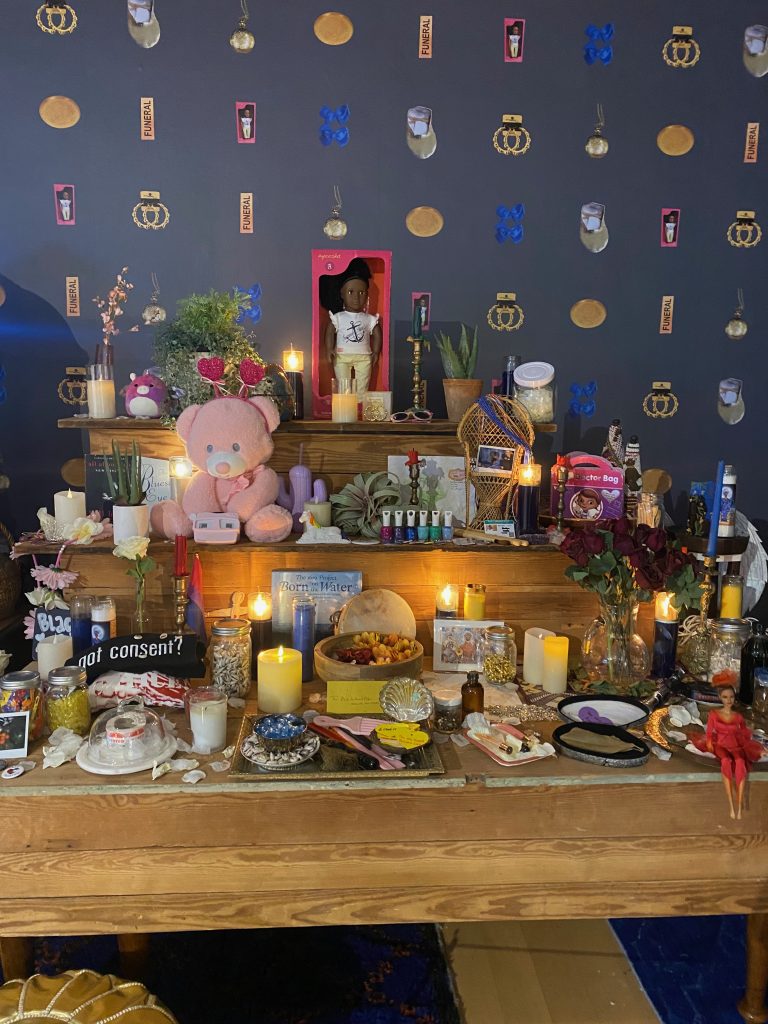
“Black girls don’t have a place to be,” said Cofer, “Black girls don’t have a place to stay. Black girls don’t have a place. [That’s what] the altar is. It’s their own place. It’s a place dedicated to them.”
At the center of the altar a curved mirror reflects the viewer back to themselves, confronting them with what they see and what they’ve seen. Asking them to hold themselves accountable for the gender-based violence that plagues Black women, girls and femmes.
At the Solidarity panel, Kiora Burgess-Mattews noted that Indigenous women are often invisibilized. “Some people don’t even think we still exist,” she shared. Cofer illuminated the opposite experience of hypervisibility that comes with being a Black girl. In both cases, erasure and dehumanization plague these marginalized groups and normalize violence.
Walking out of the exhibit, the sound of water replayed quietly in the back of my mind all day like a lullaby or a dirge—anchoring me in the mystical and resilient experience of Black girlhood.
Freedom Square: The Black Girlhood Altar was on display at the Chicago Cultural Center from November 1st, 2023 through March 10th, 2024.
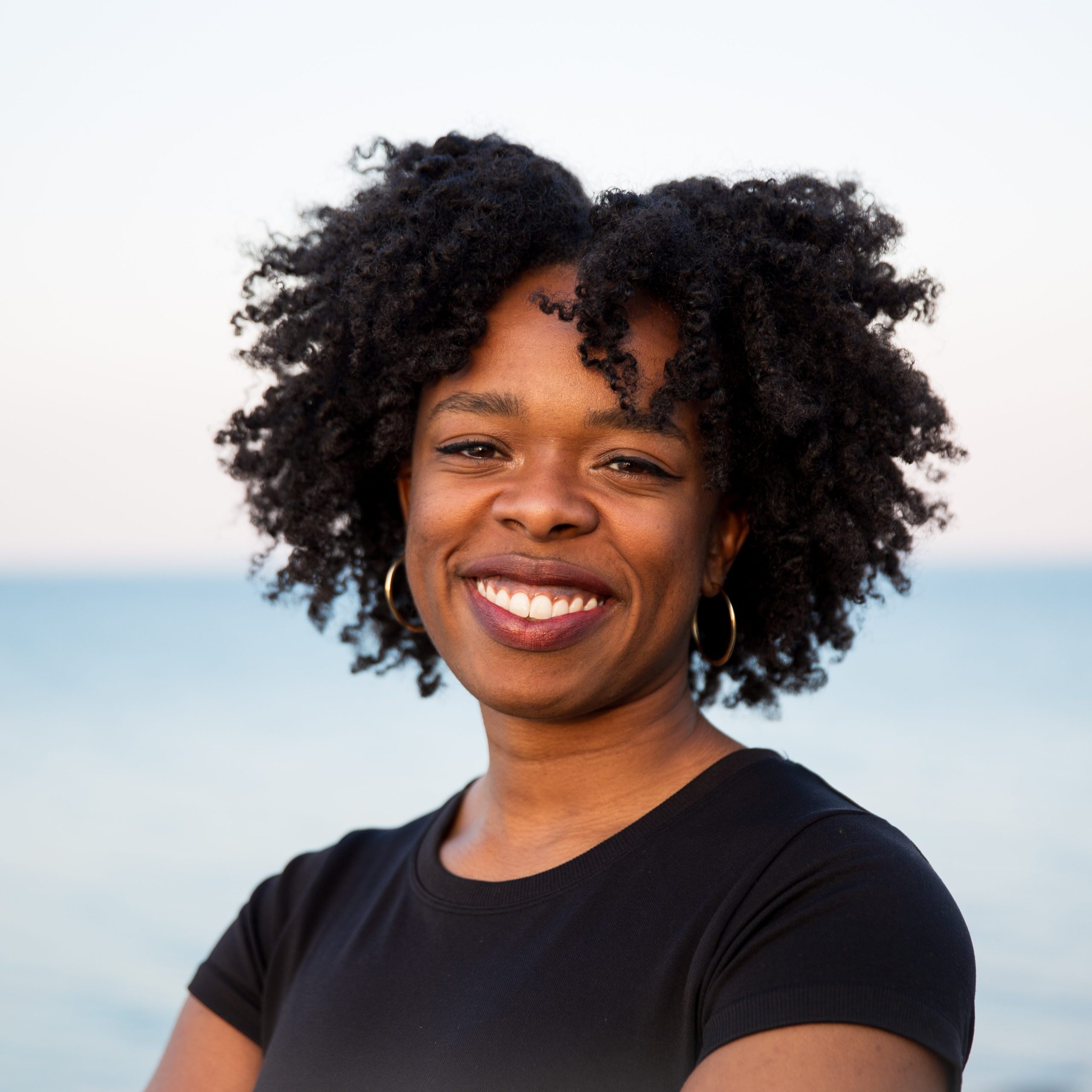
About the author: Raised in Detroit and Houston, Jasmine Barnes is a Chicago-based facilitator and writer calling on the Black womanist tradition in her work. Her writing explores culture and identity from a place of intentional witnessing and curiosity. Jasmine is a contributing writer and photographer for her local newspaper, South Side Weekly, and shares reflections on all things wonderful, astonishing and mystifying in her (news)letter, Sugar From Sun. You can learn more about Jasmine and her writing at jasbarnes.com.
